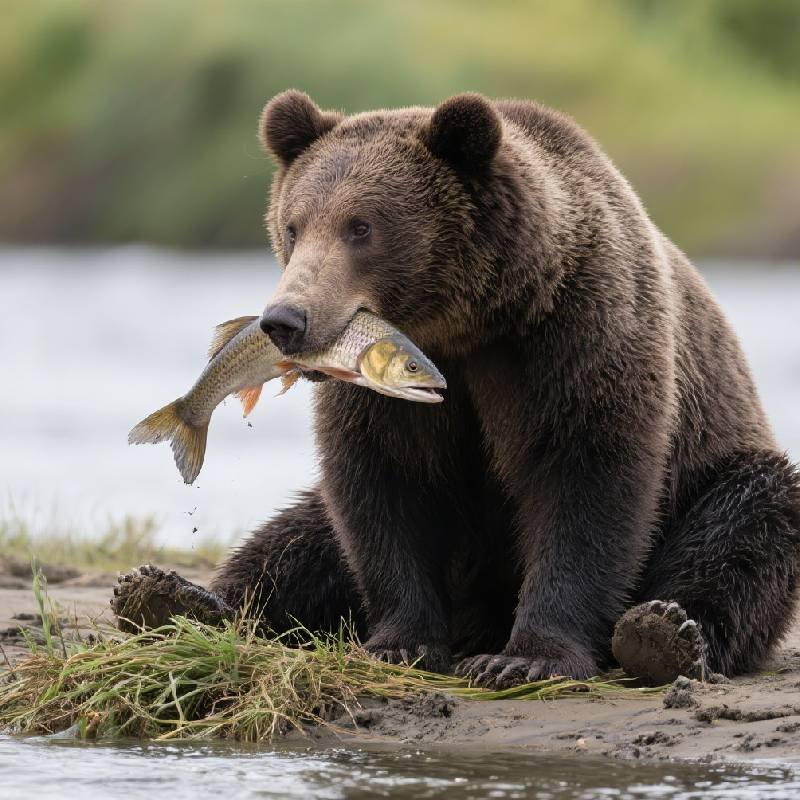Vehicle-Bear Collisions: 3 Ways Europe Is Ending a Crisis
Learn how Europe is reducing vehicle-bear collisions with a combination of advanced technology, wildlife-friendly infrastructure, and supportive policies.
Introduction: The Hidden Cost of Wildlife and Road Safety in Europe
The yellow warning signs featuring brown bears on European mountain roads are more than just safety reminders. They highlight a real and present risk. Every year, numerous vehicle-bear collisions occur frequently in Europe’s mountainous and forested regions. These accidents threaten the lives of drivers and passengers. They also harm protected bear populations.
According to a report by the European Transport Safety Council (ETSC), over 500,000 wildlife-vehicle collisions occur in Europe each year. While the percentage involving bears is not consistently reported at 3–5%, such collisions are significant due to the animal’s size and potential for severe damage. A study by the European Commission (2020) on wildlife-vehicle collisions indicates that large mammals like bears, moose, and deer are involved in a notable share of accidents, often resulting in serious vehicle damage and injuries. Direct economic losses from wildlife-vehicle collisions in Europe are estimated to reach €1 billion annually. The average repair cost for a collision with a large animal can range from €5,000 to €15,000, depending on the severity.
High-risk areas are concentrated in the mountainous regions of countries like Romania, Italy, Greece, Spain, and Slovakia. Many roads in these areas cut through bear habitats. Furthermore, collision rates peak during dawn (5:00–7:00) and dusk (18:00–21:00). These times have low visibility. Solving this problem requires a mix of scientific methods, policy support, and technical solutions. The goal is to achieve both road safety and ecological protection. Preventing these vehicle-bear collisions is a priority for conservation and public safety agencies.
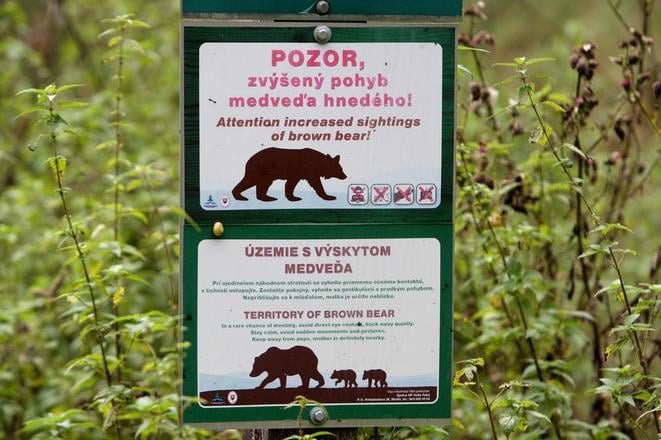
The Root Causes of Vehicle-Bear Collisions: Bear Habits and Geographic Overlap
(A) Brown Bear Core Habits: Determining Collision “Time” and “Probability”
The activity patterns and survival needs of brown bears directly increase their risk of encountering vehicles. This risk is concentrated in specific scenarios.
- Large Territory Needs: Roads Become “Necessary Paths”
The European brown bear (Ursus arctos) has a very large home range. An adult male’s territory can span 200–300 square kilometres. Females need 50–150 square kilometres (Source: WWF European Brown Bear Conservation Status Report). To find food, reproduce, or migrate, bears travel long distances daily. Many European roads cross their core activity areas. For example, Romania’s DN1 national road cuts through the Carpathian Mountains. It blocks bears’ paths from forests to valleys for feeding, forcing them to cross the road frequently. This constant intersection between travel routes creates a constant risk of vehicle-bear collisions. - Seasonal Feeding: Risk Peaks in Spring and Autumn
Brown bear feeding shows clear seasonal patterns. These directly correspond to high-accident periods.- Spring (March–May): Bears emerge from hibernation with depleted fat reserves. They need to eat large quantities of sprouting plants and insect larvae. Their activity frequency increases compared to winter, increasing road crossings.
- Autumn (September–November): To build fat for hibernation, bears forage extensively. They eat nuts, berries, and fish. They often move along roadsides near orchards and streams, raising the probability of encountering vehicles.
- Dawn and Dusk Activity: Overlap with Driver Blind Spots
Brown bears are crepuscular, meaning they are most active at dawn and dusk. Their peak activity times (dawn 5:00–7:00, dusk 18:00–21:00) coincide with reduced driver visibility. Dawn in mountains is often foggy. At dusk, light fades quickly. The human eye hasn’t adapted to the change from light to dark. Even with headlights on, visible distance may be limited. Data from various European studies indicate that a significant proportion of wildlife-vehicle collisions occur during these periods. - Bad Weather: Doubling the Risk
Fog, rain, and other low-visibility conditions can increase the risk of vehicle-bear collisions. For instance, Romania’s Transfăgărășan road frequently experiences heavy winter fog, reducing visibility. Sweden’s E14 road is often rainy in autumn. Wet roads increase braking distance. Even if a driver spots a bear, they might not react in time to avoid a collision. This combination of factors creates a perfect storm for accidents.
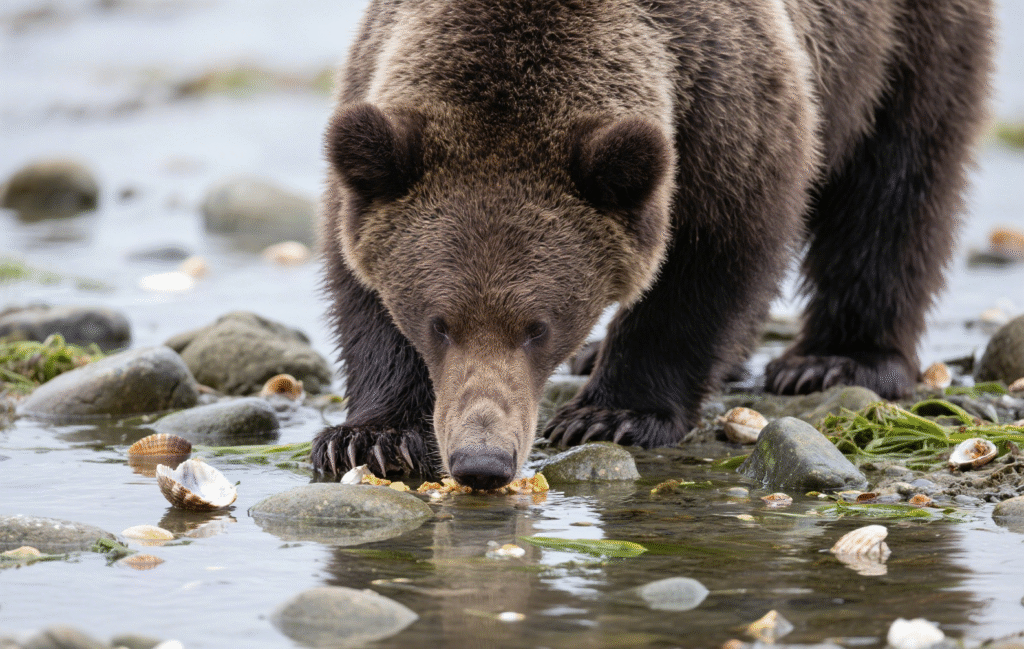
(B) High-Risk Geographic Areas: The “Overlap Zones” of Roads and Bear Habitats
Reports from the European Environment Agency (EEA) and national transport data show European bear collision hotspots overlapping with core brown bear populations. Roads in these areas either cut through habitats, run near feeding zones, or block migration paths. Key areas are listed below:
| High-Risk Area | Bear Population Estimate | Key Roads & Issues | Accident Traits & Measures |
|---|---|---|---|
| Romanian Carpathians | ~6,000–7,000 bears | DN1 road cuts through core area; Transfăgărășan attracts bears with roadside food | 20–30 accidents/year; Solar warning lights Mar–Nov, 50km/h speed limit |
| Trentino-Alto Adige, Italy | ~100 bears (Apennine) | SS43, SS42 fragment habitat | 15–20 accidents/year; Infrared cameras trigger LED lights & alarms |
| Central/Northern Sweden | ~3,000 bears | E14, E16 block seasonal migration | Approximately 200 large wildlife accidents per year, with bears involved in approximately 12% of them. |
| Tatra Mountains, Slovakia | ~1,500–2,000 bears | D1 highway crosses core area | Underpasses & fences built in 2019; accidents down 45%, but 18 in 2023 |
| Cantabrian Mountains, Spain | ~400 bears | AS-114, CL-626 cross feeding areas | 30–50 bear crossings/year; 7 accidents in 2023 (3 bears killed) |
Source: EEA, National Wildlife Reports, and IUCN Bear Specialist Group
This table illustrates the critical areas where efforts to prevent vehicle-bear collisions are most needed.
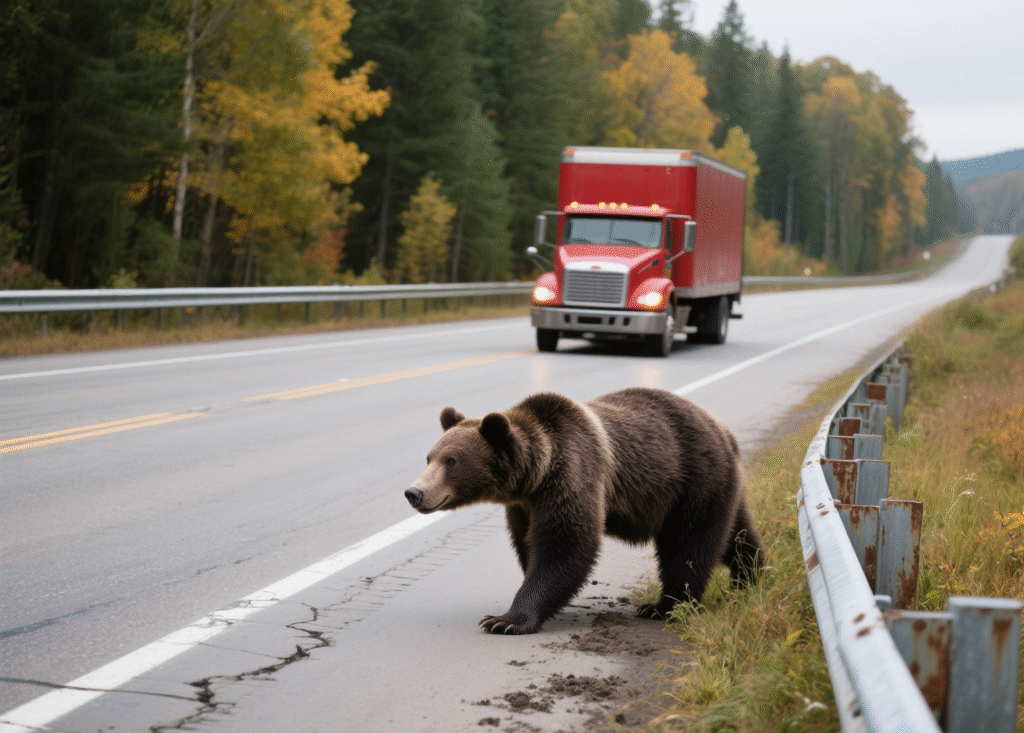
Europe’s Response Strategies and Policy Support
(A) EU LIFE Programme: Special Funding for Ecology and Safety Projects
The EU LIFE Programme (started in 1992) is a key funding source. It focuses on biodiversity conservation and reducing human-wildlife conflict. It has funded several projects aimed at preventing vehicle-bear collisions.
- LIFE BEAR PATH (2021–2025)
This joint Romanian-Slovak project has a total budget of €4.5 million (EU covers 60%). Its core aim is building wildlife overpasses and underpasses in high-frequency bear areas. It also uses fences to guide bears to use these crossings. According to project reports, building crossings in the Romanian Carpathians and Slovakia’s Tatra Mountains has reduced vehicle-bear collisions significantly. - LIFE Ursus (2019–2023)
Focused on Spain’s Cantabrian mountains, this project installed fencing and wildlife passages. It also conducted driver education campaigns. After the project, vehicle-bear collisions in the area decreased.
(B) Infrastructure Measures: From Warnings to Physical Barriers
- Targeted Warning Signs
High-risk areas use more noticeable signs. South Tyrol in Italy uses fluorescent signs that reflect headlights at night. They specify high-risk times. Romanian signs are bilingual, stating “Bear Area, Reduce Speed.” - Protective Fencing
Roads with frequent bear activity get specialized fencing. Roads in Greece’s Pindus Mountains have metal fences. “Emergency gates” are placed for ranger access. Data shows a reduction in vehicle-bear collisions on this stretch. - Guided Planting
Sweden’s “Wildlife Garden” project plants berry bushes near overpasses to encourage bears to use them instead of roads.
(C) Monitoring and Warning Systems: Fixed Thermal Imaging Pilots
In Spain’s Cantabria region, thermal imaging cameras are installed along roads near bear habitats. These cameras operate 24/7. AI algorithms identify bear outlines. When a bear approaches, it triggers warnings. Reports show this system reduced vehicle-bear collisions.
Technical Solutions: The Central Role of Thermal Imaging and AI
(A) Thermal Imaging Technology: Overcoming Environmental Limits
Thermal imaging detects infrared radiation (heat). A bear’s body temperature is around 38°C, creating a contrast with surroundings. Thermal cameras can detect bears in extreme conditions.
- Penetrates Darkness and Bad Weather: Thermal imaging can detect bears up to 200 meters away in fog or snow.
- Penetrates Foliage: Thermal imaging can detect heat through gaps in vegetation.
(B) Early Warning Systems: Key Performance Indicators
The effectiveness of a warning system depends on:
- Detection Range: Longer range provides more reaction time.
- Reaction Time: AI systems react faster than humans.
- Accuracy: High accuracy prevents false alarms.
(C) Robofinity InsightDrive: Technical Details Adapted for European Roads
The Robofinity InsightDrive is designed for European road conditions:
- Strong Penetration Wavelength: Uses 8–14μm band to penetrate rain and fog.
- High Sensitivity Detection: Detects subtle temperature differences.
- AI Super-Resolution Optimization: Enhances image clarity.
- Color-Coded Alerts: Red for bears, yellow for other animals, blue for vehicles/pedestrians.
According to user reviews, its bear detection accuracy in low visibility is high, reducing false alarms.

FAQ: Common Questions on Vehicle-Bear Collisions
Q1: Which areas in Europe have the most bear activity?
A: Activity is concentrated in:
- Carpathian Mountains (Romania, Slovakia, Bulgaria)
- Southern Alps (Italy, Austria, France)
- Iberian Peninsula (Spain, Portugal)
- Baltic Coast & Eastern Europe (Finland, Poland)
Check local transport departments for real-time risk maps.
Q2: What should I do if I encounter a bear crossing the road while driving?
A: Follow these guidelines:
- Slow down gradually.
- Do not honk or flash lights.
- Do not swerve suddenly.
- Keep headlights on.
- Wait for the bear to leave.
- Never get out of the vehicle.
Q3: Is using a vehicle thermal imaging device legal in Europe?
A: Yes, provided it complies with EU Directive 2007/46/EC. Some countries have specific rules regarding installation and use.
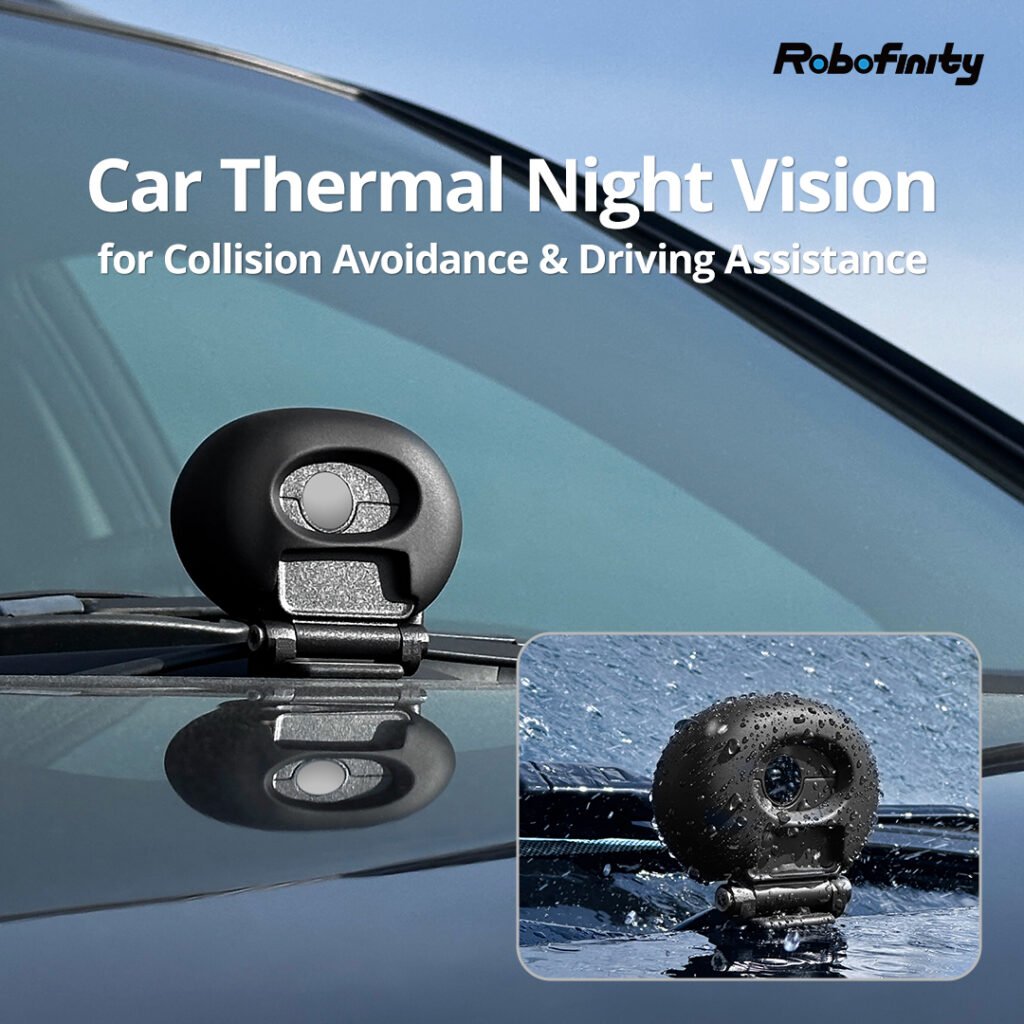
Q4: Are there other prevention devices besides thermal imaging?
A: Yes, but they are less effective:
- Wildlife warning whistles
- Reflective tape
- Scent repellents
Thermal imaging is currently the most effective technology.
Conclusion: Safe Driving is Ecological Protection
Vehicle-bear collisions can be avoided through science, policy, and technology. Europe has reduced accidents through LIFE projects, infrastructure, and thermal imaging. Drivers can contribute by learning route risks, obeying warnings, driving cautiously, and avoiding littering. Protecting safety also helps protect brown bears, promoting the coexistence of humans and wildlife.

